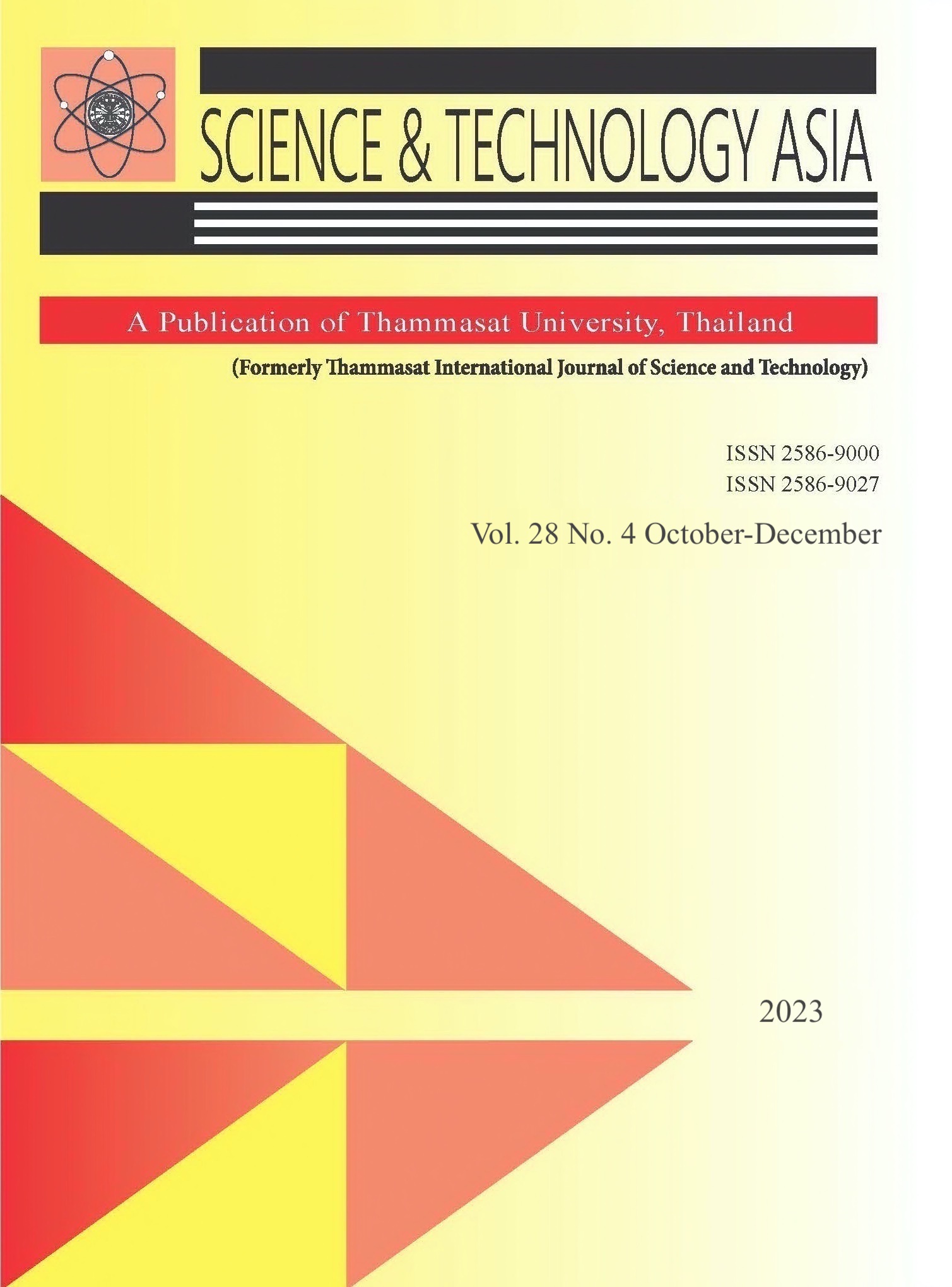Mathematical Modeling and Optimal Control of HPV Infection of Epithelial Cells and Cervical Cancer
Main Article Content
Abstract
In this paper, a within-host model of human papillomavirus (HPV) infection and cervical cancer is proposed. The model consists of seven compartments including susceptible, exposed, infected, early-stage cervical cancer cells, end-stage cervical cancer cells, HPV, and recovered cervical cells. The existence, positivity and boundary of solutions are proved and the basic reproduction number is calculated. We obtain that when the basic reproduction number is less than one, an infection-free equilibrium point is both locally and globally stable, whereas when it is greater than one an infected steady state exists and is globally stable. Further, the optimal control problem is applied in this study by using Pontryagin’s Minimum Principle with three control variables which are preventive vaccine, treatment effort for infected cervical cells and treatment effort for early-stage cervical cancer cells. Numerical simulations of optimal control model demonstrate that each individual control could reduce an HPV infection and cervical cancer to some certain extent, however, a combination of all three controls gives the best scenario in controlling HPV infection and cervical cancer.
Article Details

This work is licensed under a Creative Commons Attribution-NonCommercial-NoDerivatives 4.0 International License.
References
Burd EM. Human papillomavirus and cervical cancer. Clinical Microbiology Reviews, 2003;16(1):1-17.
Chan CK, Aimagambetova G, Ukybassova T, Kongrtay K, Azizan A. Human papillomavirus infection and cervical cancer: epidemiology, screening, and vaccination-review of current perspectives. Journal of Oncology, 2019; 3257939.
Meites E, Gee J, Under E, Markowitz L. Human papillomavirus. Centers for Disease Control and Prevention. Available from: https://www.cdc.gov/vaccines/pubs/pinkbook/hpv.html#hpv
Mirabello L, Clarke MA, Nelson CW, Dean M, Wentzensen N, Yeager M, Cullen M, Boland JF, Schiffman M, Burk RD. The intersection of HPV epidemiology, genomics and mechanistic studies of HPV-mediated carcinogenesis. Viruses, 2018;10(2).
Ryser MD, Gravitt PE, Myers ER. Mechanistic mathematical models: an underused platform for HPV research. Papillomavirus Research, 2017;3:46-9.
WHO. Cervical cancer. Available from https://www.who.int/news-room/factsheets/detail/cervical-cancer
Brotherton JML. Impact of HPV vaccination:achievements and future challenges. Papillomavirus Research, 2019;7:138-40.
Tanaka H, Shirasawa H, Shimizu D, Sato N, Ooyama N, Takahashi O, Terada Y. Preventive effect of human papillomavirus vaccination on the development of uterine cervical lesions in young Japanese women. Journal of Obstetrics and Gynaecology Research, 2017;43(10):1597-601.
Elbasha EH. Global stability of equilibria in a two-sex HPV vaccination model. Bulletin of Mathematical Biology, 2008;70:894-909.
Ribassin-Majed L, Lounes R. A SIS model for human papillomavirus transmission. HAL open science 2010; hal-00555733.
Lee SL, Tameru AM. A mathematical model of human papillomavirus (HPV) in the United States and its impact on cervical cancer. Journal of cancer, 2012;3:262-68.
Gurmu ED, Kumsa B, Koya PR. Optimal control strategy on human papillomavirus (HPV) model with backward bifurcation analysis. IOSR Journal of Mathematics, 2019;15(6):65-87. [13] Zhang K, Ji Y, Pan Q, Wei Y, Ye Y, Liu H. Sensitivity analysis and optimal treatment control for a mathematical model of human papillomavirus infection. AIMS Mathematics, 2020a;5(3):2646-70.
Zhang K, Wang X, Liu H, Ji Y, Pan Q, Wei Y, Ma M. Mathematical analysis of a human papillomavirus transmission model with vaccination and screening. Mathematical Biosciences and Engineering, 2020b;17(5):5449-76.
Smith RJ, Li J, Mao J, Sahai B. Using within-host mathematical modelling to predict the long-term outcome of human papillomavirus vaccines. Canadian Applied Mathematics Quarterly, 2013;21(2):281-99.
Asih TSN, Lenhart S, Wise S, Aryati L, Adi-Kusumo F, Hardianti MS, Forde J. The dynamics of HPV infection and cervical cancer cells. Bulletin of Mathematical Biology, 2016;78:4-20.
Gurmu ED, Koya PR. Sensitivity analysis and modeling the impact of screening on the transmission dynamics of human papilloma virus (HPV). American Journal of Applied Mathematics, 2019;7(3):70-9.
Allali K. Stability analysis and optimal control model of HPV infection model with early-stage cervical cancer. BioSystems 2021;199:104321.
Mac Indoe E. Analysis of detenministic and stochastic HIV models. Student Research Submissions, 2019:8-9.
van den Drissche P, Watmough J. Reproductive numbers and sub-threshold endemic equilibria for compartment models of disease transmission. Math Biosci, 2002;180:29-48.
Castillo-Chavez C, Feng Z, Huang W. On the Computation of and its Role on Global Stability. Springer-Verlag and Berlin Heidelberg-New York, 2002:229-50.
La salle, J. P. The Stability of Dynamical Systems, Regional Conference Series in Applied Mathematics, SIAM, Philadelphia, 1976.
Pontryagin LSV, Boltyanskii GR, Gamkrelidze V, Mishchenko EF. The mathematical theory of optimal processes, Gordon and Breach Science, New York, 1986.
Kheunchana R. Mathematical model and optimal control model of HPV infection of epithelial cell in the cervix with vaccination and treatment [Undergraduate thesis]. Phitsanulok: Naresuan University; 2020.


